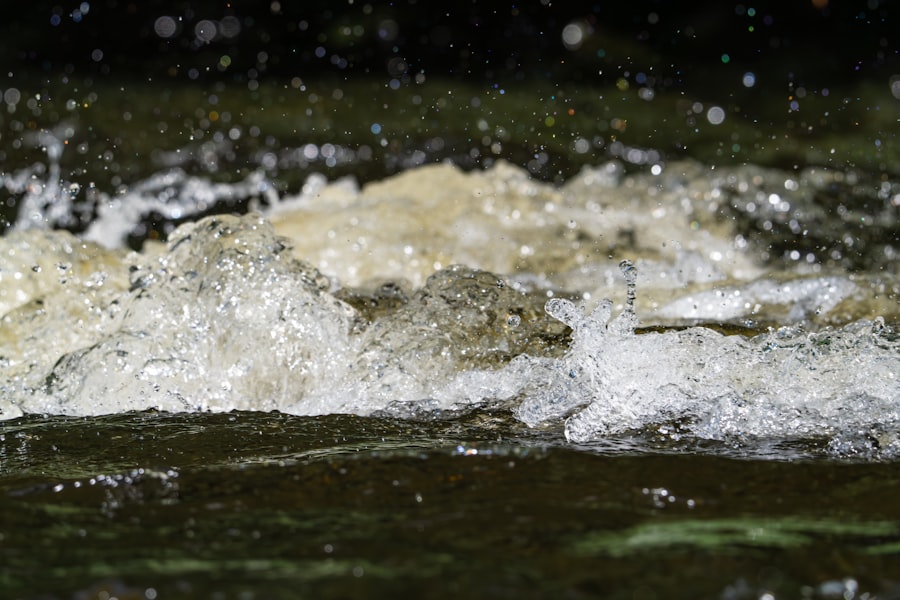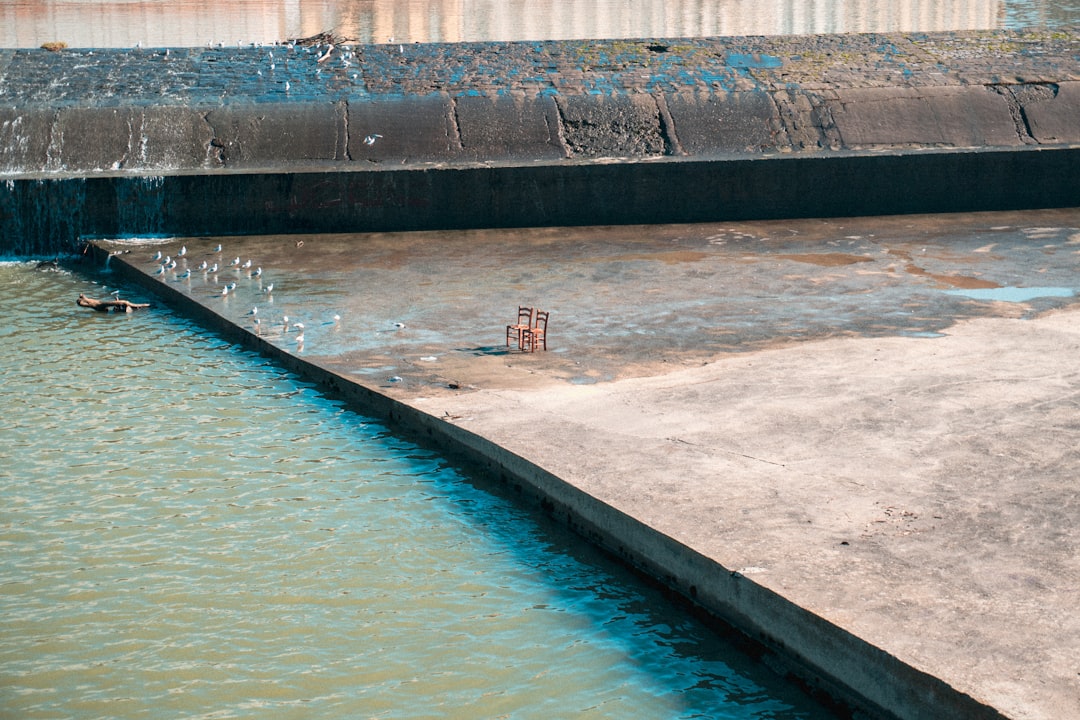Water contamination reports serve as essential documents that provide critical information about the quality of water in a given area. These reports are typically generated by local water authorities or environmental agencies and are designed to inform the public about potential hazards associated with their drinking water. They often include data on various contaminants, their concentrations, and whether these levels exceed established safety standards.
Understanding these reports is crucial for individuals and communities, as they can directly impact health and well-being. The complexity of water contamination reports can be daunting for the average person. They often contain technical jargon and scientific data that may not be easily understood without a background in environmental science.
However, it is vital for consumers to familiarize themselves with the key components of these reports. By doing so, they can make informed decisions regarding their water consumption and take necessary actions if contaminants are detected. Awareness of the information contained in these reports empowers individuals to advocate for cleaner water and hold authorities accountable for maintaining water quality.
Key Takeaways
- Water contamination reports help identify harmful substances and assess water safety.
- Common contaminants include bacteria, heavy metals, pesticides, and chemicals.
- Understanding test results is crucial for determining water quality and necessary actions.
- Contaminants often originate from industrial, agricultural, and natural sources.
- Regular testing, proper treatment, and preventive measures are essential to ensure safe drinking water.
Common Contaminants Found in Water
Water can be tainted by a variety of contaminants, each posing different risks to human health and the environment. Among the most common contaminants are bacteria, viruses, heavy metals, pesticides, and industrial chemicals. Bacteria such as E. coli and Salmonella can enter water supplies through fecal contamination, leading to severe gastrointestinal illnesses. Viruses, too, can be introduced into water systems through similar pathways, making it imperative for communities to monitor their water sources closely. Heavy metals like lead, arsenic, and mercury are another significant concern. These substances can leach into drinking water from corroded pipes or industrial runoff, posing long-term health risks such as neurological damage and developmental issues in children. Pesticides and herbicides used in agriculture can also contaminate groundwater and surface water, leading to potential exposure through drinking water or food sources. Understanding the types of contaminants that may be present in local water supplies is essential for individuals to protect their health and that of their families.
Interpreting Test Results

Interpreting test results from water quality assessments requires a careful examination of the data presented in contamination reports. Each report typically includes a list of detected contaminants along with their concentrations measured in parts per million (ppm) or parts per billion (ppb). It is crucial for individuals to compare these levels against established safety standards set by regulatory bodies such as the Environmental Protection Agency (EPA).
If contaminant levels exceed these standards, it may indicate a potential health risk. Moreover, understanding the context of these results is equally important. For instance, a single detection of a contaminant may not necessarily indicate an immediate health threat if the concentration is low and within acceptable limits.
Conversely, consistent detections or high concentrations can signal a more serious issue that requires urgent attention. Individuals should also consider factors such as the source of their water supply—whether it is municipal or private—and any recent changes in local environmental conditions that could affect water quality.
Sources of Water Contamination
| Source of Contamination | Type of Contaminants | Common Effects | Examples |
|---|---|---|---|
| Industrial Discharge | Chemicals, Heavy Metals, Toxic Waste | Water toxicity, Bioaccumulation, Health hazards | Mercury, Lead, Arsenic |
| Agricultural Runoff | Pesticides, Fertilizers, Nutrients | Eutrophication, Algal blooms, Waterborne diseases | Nitrates, Phosphates, Herbicides |
| Sewage and Wastewater | Pathogens, Organic Matter, Nutrients | Disease outbreaks, Oxygen depletion | Bacteria, Viruses, Nitrogen compounds |
| Urban Runoff | Oil, Grease, Heavy Metals, Trash | Water pollution, Habitat degradation | Lead, Zinc, Petroleum hydrocarbons |
| Mining Activities | Heavy Metals, Acid Mine Drainage | Acidification, Toxicity to aquatic life | Copper, Cadmium, Sulfates |
| Atmospheric Deposition | Acid Rain, Airborne Pollutants | pH changes, Contaminant accumulation | Sulfur dioxide, Nitrogen oxides |
The sources of water contamination are diverse and can be categorized into point sources and non-point sources. Point sources refer to specific locations where contaminants are discharged directly into water bodies, such as factories, sewage treatment plants, or landfills.
For example, an industrial facility discharging waste into a river can be monitored and held accountable for its emissions. On the other hand, non-point sources are more challenging to manage due to their diffuse nature. These include agricultural runoff, urban stormwater runoff, and atmospheric deposition.
Rainwater can wash fertilizers, pesticides, and other pollutants from fields and urban areas into nearby streams and rivers, leading to widespread contamination. Understanding these sources is crucial for developing effective strategies to mitigate water pollution and protect public health.
Health Risks Associated with Contaminated Water
The health risks associated with consuming contaminated water can be severe and varied. Microbial contaminants such as bacteria and viruses can lead to acute illnesses characterized by symptoms like diarrhea, vomiting, and fever. In some cases, these infections can be life-threatening, particularly for vulnerable populations such as young children, the elderly, and individuals with compromised immune systems.
Chemical contaminants pose different health risks that may not manifest immediately but can have long-term effects. For instance, exposure to heavy metals like lead can result in developmental delays in children and cognitive impairments in adults. Similarly, prolonged exposure to certain pesticides has been linked to an increased risk of cancer and other chronic diseases.
The cumulative effects of consuming contaminated water over time underscore the importance of monitoring water quality and taking appropriate action when necessary.
Steps to Take if Water is Contaminated

If individuals suspect that their water supply is contaminated, it is crucial to take immediate action to safeguard their health. The first step is to stop using the water for drinking or cooking until its safety can be confirmed through testing. This precautionary measure helps prevent potential exposure to harmful contaminants.
Individuals should also contact their local water authority or environmental agency to report their concerns and seek guidance on testing procedures. In addition to reporting the issue, individuals may consider conducting their own water tests using home testing kits available at hardware stores or online. These kits can provide preliminary results regarding common contaminants such as lead, bacteria, and nitrates.
However, it is essential to follow up with professional testing for more accurate results and comprehensive analysis. If contamination is confirmed, individuals should explore alternative sources of safe drinking water while working with authorities to address the underlying issues causing the contamination.
Government Regulations and Standards for Water Quality
Government regulations play a pivotal role in ensuring safe drinking water for communities across the globe. In the United States, the Environmental Protection Agency (EPA) sets national standards for drinking water quality under the Safe Drinking Water Act (SDWA). These standards establish maximum contaminant levels (MCLs) for various substances based on scientific research regarding their health effects.
Water suppliers are required to monitor their systems regularly and report any violations of these standards. In addition to federal regulations, many states have their own laws governing water quality that may be more stringent than federal guidelines. These regulations are designed to protect public health by ensuring that drinking water remains free from harmful contaminants.
Understanding these regulations helps individuals recognize their rights regarding safe drinking water and empowers them to advocate for better practices within their communities.
Importance of Regular Water Testing
Regular water testing is essential for maintaining safe drinking water standards and identifying potential contamination issues before they escalate into serious health risks. Testing allows individuals and communities to monitor changes in water quality over time and respond proactively to emerging threats. It is particularly important for households relying on private wells or alternative water sources that may not be subject to regular government oversight.
By conducting routine tests, individuals can gain valuable insights into the presence of contaminants such as bacteria, heavy metals, and chemical pollutants in their water supply. This information enables them to take appropriate measures—whether through filtration systems or alternative water sources—to ensure their drinking water remains safe. Regular testing also fosters community awareness about local water quality issues, encouraging collective action toward improving overall public health.
Treatment Options for Contaminated Water
When faced with contaminated water supplies, various treatment options are available to mitigate health risks associated with harmful substances. Filtration systems are among the most common solutions for households seeking to improve their drinking water quality. These systems can range from simple pitcher filters to more complex under-sink or whole-house filtration units designed to remove specific contaminants such as lead or chlorine.
In addition to filtration systems, other treatment methods include reverse osmosis, ultraviolet (UV) disinfection, and distillation. Reverse osmosis systems use a semi-permeable membrane to remove impurities from water effectively, while UV disinfection employs ultraviolet light to kill bacteria and viruses without introducing chemicals into the water supply. Distillation involves boiling water and collecting the steam to separate contaminants from pure water.
Each treatment option has its advantages and limitations; therefore, individuals should assess their specific needs based on the types of contaminants present in their water supply.
Preventing Water Contamination
Preventing water contamination requires a multifaceted approach involving individual actions, community initiatives, and regulatory measures. Individuals can contribute by adopting practices that minimize pollution runoff into local waterways—such as using environmentally friendly fertilizers in gardens or properly disposing of hazardous household waste instead of pouring it down drains. Communities can also play a vital role in preventing contamination through education campaigns aimed at raising awareness about local environmental issues affecting water quality.
Local governments can implement policies that promote sustainable land use practices and protect natural resources from industrial development or agricultural runoff. By fostering collaboration among residents, businesses, and policymakers, communities can create a culture of stewardship that prioritizes clean water access for all.
Seeking Professional Help for Water Contamination Issues
When dealing with complex issues related to water contamination, seeking professional help is often necessary for effective resolution. Environmental consultants or certified laboratories can provide expert analysis of water samples and offer tailored recommendations based on specific contamination concerns. These professionals possess the knowledge and tools required to identify sources of pollution accurately and develop strategies for remediation.
Additionally, local health departments or environmental agencies can assist individuals in navigating regulatory requirements related to contaminated water supplies. They may offer resources for testing services or provide guidance on legal rights concerning safe drinking water access. By engaging with professionals who specialize in environmental health issues, individuals can ensure they receive accurate information and support throughout the process of addressing contamination challenges effectively.
In conclusion, understanding the complexities surrounding water contamination is essential for safeguarding public health and ensuring access to safe drinking water. By familiarizing themselves with contamination reports, recognizing common pollutants, interpreting test results accurately, and taking proactive measures against contamination risks, individuals can play an active role in protecting themselves and their communities from the dangers posed by contaminated water supplies.
To gain a deeper understanding of water contamination reports and their implications, you may find it helpful to read the article available at this link. It provides valuable insights into the various factors that contribute to water quality issues and how to interpret the data presented in contamination reports.
WATCH THIS! The $400 Billion Water Lie: Why Bottled Water Is a Scam
FAQs
What is a water contamination report?
A water contamination report is a document that provides detailed information about the presence and levels of contaminants in a water supply. It typically includes data on various chemical, biological, and physical pollutants detected in the water.
Why are water contamination reports important?
Water contamination reports are important because they help identify potential health risks associated with drinking or using contaminated water. They inform the public and authorities about water quality and guide necessary actions to ensure safe water.
What types of contaminants are commonly tested in water reports?
Common contaminants tested include bacteria (such as E. coli), heavy metals (like lead and arsenic), chemicals (such as pesticides and nitrates), and physical parameters (like turbidity and pH levels).
How often are water contamination reports generated?
The frequency of water contamination reports varies depending on local regulations and water source. Public water systems often produce reports annually, while private wells may be tested less frequently or as needed.
Who is responsible for producing water contamination reports?
Water utilities, environmental agencies, or certified laboratories typically produce water contamination reports. In some cases, private property owners may also conduct testing and generate reports for their water sources.
How can I interpret the results in a water contamination report?
Interpreting a water contamination report involves comparing detected contaminant levels to established safety standards or guidelines, such as those set by the Environmental Protection Agency (EPA). Levels above these standards may indicate a health risk.
What should I do if my water contamination report shows unsafe levels of contaminants?
If unsafe contaminant levels are detected, you should avoid using the water for drinking or cooking until it is treated or replaced. Contact local health or environmental authorities for guidance on remediation and alternative water sources.
Are all contaminants harmful at any level?
Not all contaminants are harmful at low levels. Many substances have maximum contaminant levels (MCLs) established to indicate safe exposure limits. Exceeding these limits may pose health risks.
Can water contamination reports detect all possible contaminants?
No, water contamination reports typically test for a specific list of contaminants based on local concerns and regulations. Some contaminants may not be included in routine testing and require specialized analysis.
Where can I access water contamination reports for my area?
Water contamination reports for public water systems are often available on local water utility websites, government environmental agency portals, or by request from the water provider. Private well owners may need to obtain reports from their testing laboratories.
